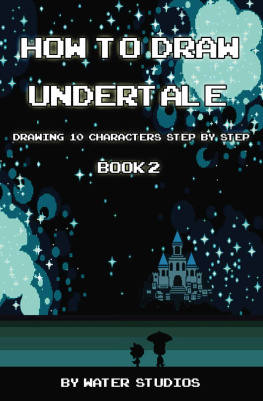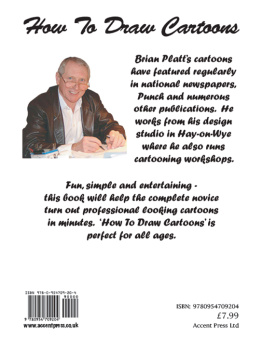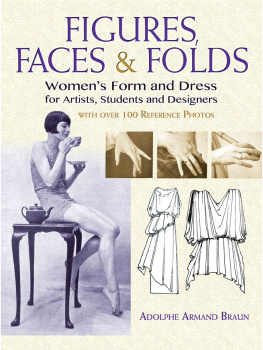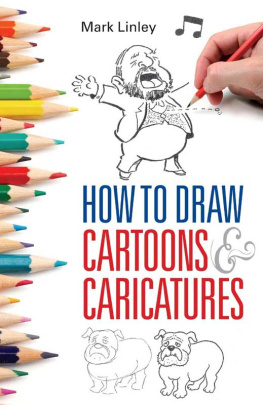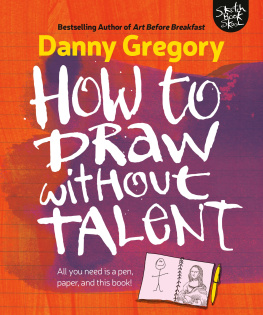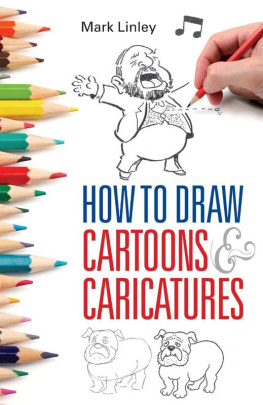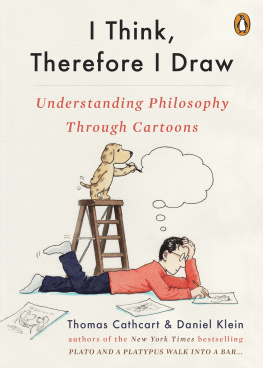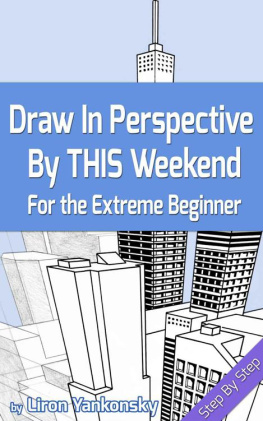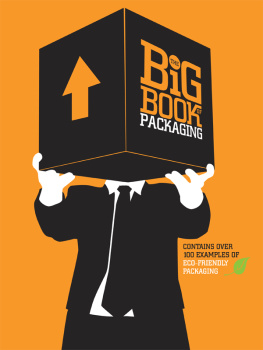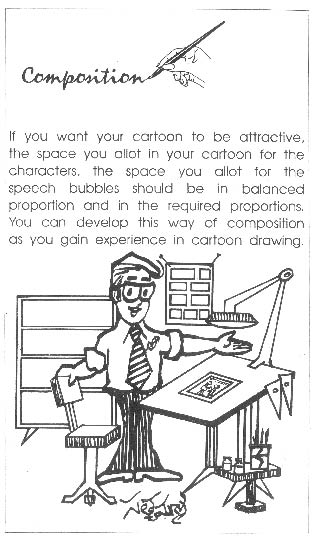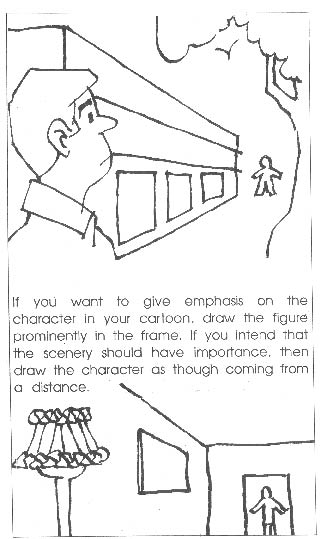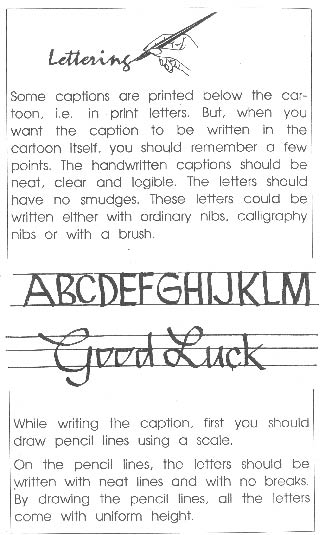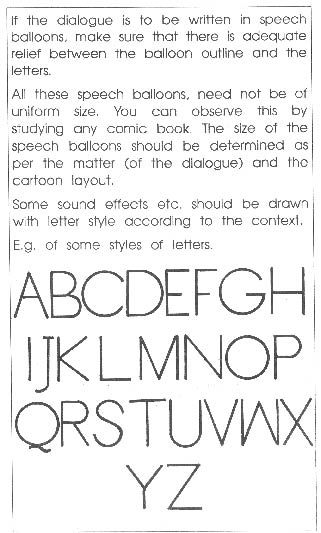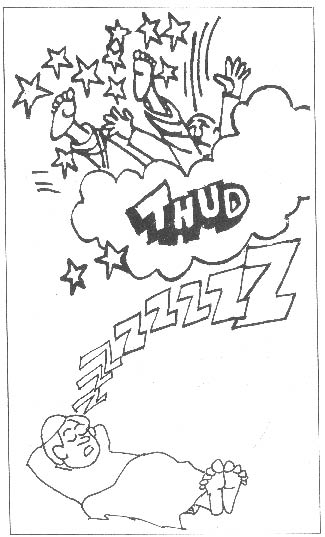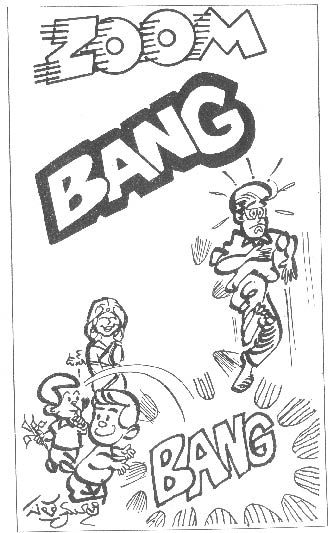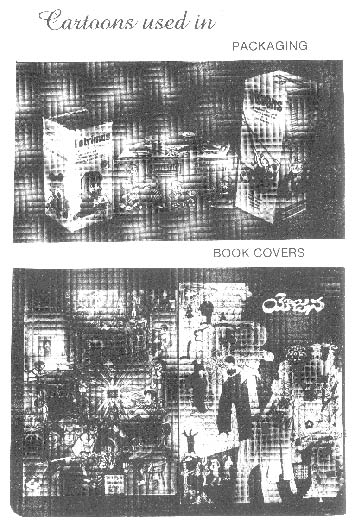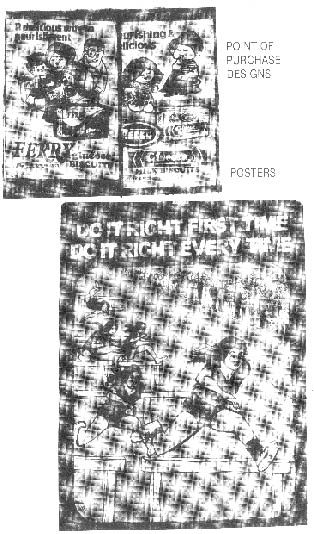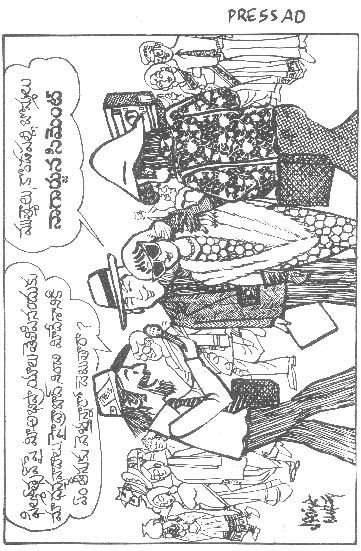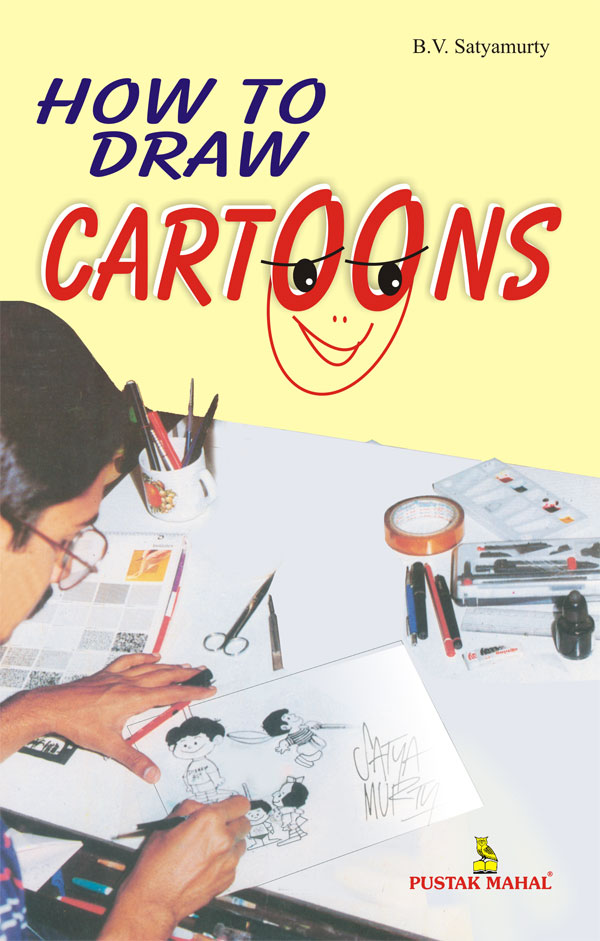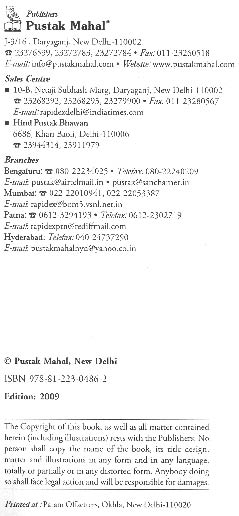B.V. Satyamurty
Graphic Designer & Cartoonist
Cartoons
How to Draw
COMPLETE COACHING IN
CARTOONING
A magazine without cartoons is like a soup without salt. Despite the immense popularity which cartoons joy, there are very few books on this subject. Many young people who aspire to learn the art of cartooning are often discouraged as there is no proper book in their reach to guide them.
Having realised this fact, Pustak Mahal is presenting you this unique book on Cartoon Drawing. Your teacher is none other than the celebrity in the cartoon field Sri B.V. Satyamurty. He has been a very successful Cartoonist, Graphic Designer, Art Director and Advertising Consultant for the past 30 years. He has conducted many workshops on cartoon drawing and organized cartoon exhibitions.
How to Draw Cartoons is a complete book on cartoons as various subjects on cartooning are covered in it. Undoubtedly, it is a very enjoyable and comprehensive book on cartoons which helps all those who are interested in the subject.
Publishers
Cartoonist's Note
I have always been receiving a number of requests from many enthusiastic young people to teach them the art of cartooning. How to Draw Cartoons is an attempt made in that direction. I have tried to cover all important subjects of cartooning so as to appeal to all the enthusiasts.
I am thankful to my brothers Sri B.V. Ramana Rao, my philosopher and guide, who inspired me at every stage, and Sri B.V. Pattabhi Ram, magician and hypnotist.
My sincere thanks to Shri Ram Avatar Gupta for taking up this venture for the benefit of budding cartoonists
I request the readers to offer their valuable suggestions, so as to enable me to add or delete in the forthcoming edition of this book.
B.V. Satyamurty
B/68, F/5,
Vijayanagar Colony,
Hyderabad-500 457.
Cover page model:
Sathya Sai Bhaskar
Photographs by:
B. Jogeswari
B.S. Padmavathi
Contents
Page
1. Practice these Lines 13
2. Heads 17
3. Expressions 19
4. Guidelines 39
5. Shapes 45
6. Guidelines 49
7. Line of Action 54
8. Materials 56
9. Nibs & Brushes 60
10. Mannequin 71
11. Hands & Legs 73
12. Ladies & Gents 81
13. Dress 86
14. Reproduction in Print 97
15. Wash Drawings 110
16. Screens 120
17. Colour Cartoons 129
18. Cartoons for Publications and Sizes 131
19. Picture Stories 140
20. Perspective 149
21. Composition 150
22. Lettering 153
23. Cartoons used in
Packaging Designs, Posters and
Press Ads etc. 158
Foreword
The fables and apologues of Panchatantra have demonstrated for centuries that education need not always be a bitter pill. The delinquent princes of the ruler in Panchatantra learnt all that they needed to through stories which hold the interest of even adults to this day.
Sketches, drawings, caricatures and cartoons do like-wise. They supplement and sometimes even supplant the written word. The pocket cartoons or the comic strip are now the essential part of the make-up of a daily paper. What a pedantic, high flaunting editorial finds hard to achieve is accomplished more effectively and instantly by a few strokes of the brush. So many writers of scarlet prose envy the cartoonist who by his economy or sometimes total saving of words proves the Shakespearean adage that brevity is the soul of wit.
A good artist always feels the inadequacy of a single medium. There are emotions which can be expressed in words prose, poetry, song; others which demand the plastic medium; still others which can find articulation in the fine arts of painting or sketching. But we find it difficult to sing or paint or draw, because we are acculturated to putting the cart before the horse. Man learns to sing before he speaks, dance before he walks and draw before he writes. But he finds it easier to do the second-step activities, because of our system of education. No such duality afflicts the Chinese and even the Japanese writing and painting. The same brush is used for both calligraphy and sketching. The same eight basic strokes of the hand are employed in both. To those uninitiated in the Chinese calligraphy, it is difficult to distinguish between its writing and sketching.
How one wishes one could draw and that one had learnt it early in one's life, when the absorption rate of learning is high and also there seemed to be oodles of time available! To my knowledge there is a dearth of competent books on the subjects. I have myself scrounged various bookshops for this purpose, in vain. It is good therefore to see someone like Satyamurty, a renowned practitioner of the art himself to sit down to write a 'how-to' book on the subject. A self-taught cartoonist, he has been associated with a number of Telugu papers and magazines. He has won awards and honours galore. When someone like him comes forward to instruct what he learnt by himself, one feels reassurance in his ability to hold one's hand and lead gently to new vistas.
Drawing, like literacy need not be employed for a specific purpose. It is a delight, a pleasure, an end in itself. One feels elated to acquire a new means through which to express oneself. A book like this opens new horizons. Either you learn sketching the traditional way by spending years at a professional institution the way our commercial artists do. Or you learn as you go along, acquire a knowledge of the basics and then go on refining it. This book is meant primarily for the second category. The Satyamurty way is what might be called the 'direct method'. You learn to draw first, but soon and inevitably you will be driven to acquire the knowledge about the beauty of the system called human anatomy and learn how so many subjects like architecture derive from human measurements. Man is a measure of everything from painting to architecture to social policy. The same holds good about the animals and the vegetable kingdom. Knowledge is one integral whole. We divide it in compartments for the sake of convenience but its integrity comes alive when we are able to look across the artificial barriers. Learning to sketch and draw will help you in that direction, to see the wholeness of life.


